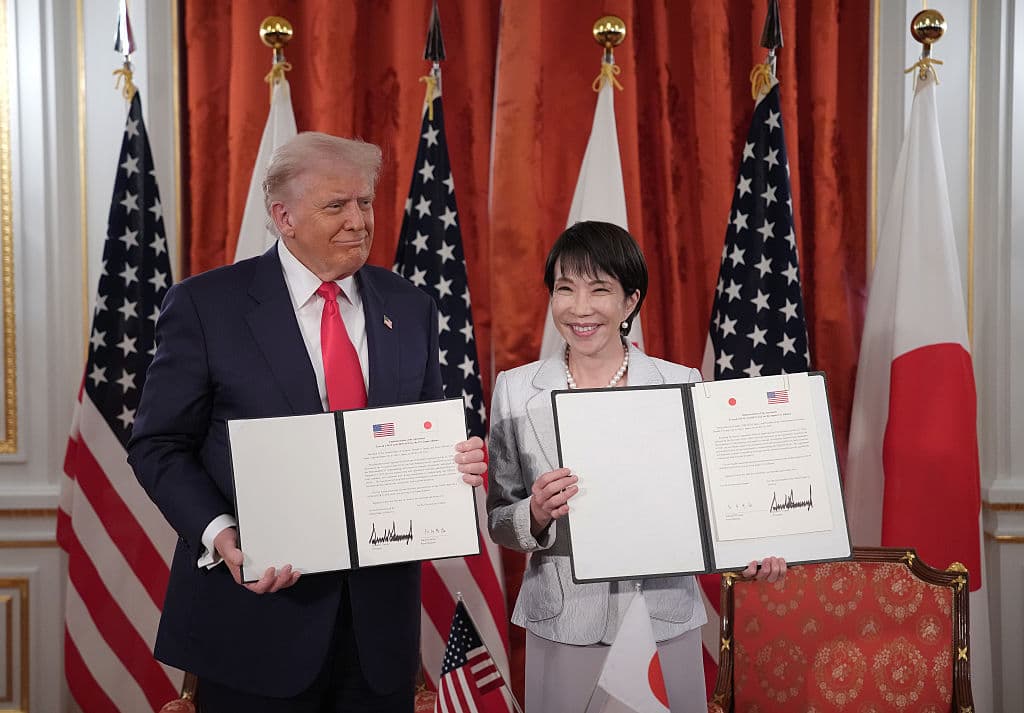Trump and Japan’s New Prime Minister Herald ‘New Golden Age’ in Countries’ Alliance
The rapport between America and Japan presents an immediate challenge to Xi Jinping, whom Trump is scheduled to see Thursday in what’s likely to be the most difficult summit of his Asian swing.

President Trump and Japan’s new prime minister, Sanai Takaichi, have opened what they agree is “a new golden age of the ever-growing U.S.-Japan alliance” that should stand as a warning to China’s Communist Party boss, Xi Jinping.
Whatever their differences on tariffs and trade, the bond formed between Mr. Trump and Ms. Takaichi at Tokyo and then at America’s huge naval base on Tokyo Bay placed their mutual commitment in the way of Chinese expansionism in the Indo-Pacific, notably in the South China Sea and against Free China on the island province of Taiwan.
Neither Mr. Trump nor Ms. Takaichi got into specifics, but they obviously were delighted to have struck such rapport with one another at Tokyo and then at Yokosuka naval base, to which they flew in the president’s Marine One helicopter. Ms. Takaichi said America and Japan formed “the greatest alliance in the world,” and Mr. Trump pronounced Japan “an ally at the strongest level.”
The relationship between the two at once picked up the spirit of the bond Mr. Trump formed during his first term with Japan’s longest-serving prime minister, Shinzo Abe, who was assassinated in 2022, nearly two years after stepping down.
A one-time disciple of Abe, Ms. Takaichi vowed, “I will continue to strive to strengthen Japan’s national power, namely its diplomacy and defense capabilities, economic power, technology, intelligence, and human resources.” Mr. Trump remembered Abe speaking “so well” of her and said he was “not surprised” by her rise to becoming Japan’s first female prime minister.
The rapport between America and Japan presents an immediate challenge to Mr. Xi, whom Mr. Trump is scheduled to see Thursday in South Korea in what’s likely to be the most difficult summit of his Asian swing. Behind Japan are 50,000 American troops, more than in any other foreign country.
Ms. Takaichi sought to get on Mr. Trump’s good side by offering as a gift a putter used by Abe when he golfed with Mr. Trump in Japan six years ago. She also joined those who had nominated him for a Nobel peace prize.
All that flattery, however, did not quite paper over every difference. It was not clear how the Japanese would invest $550 billion into America, as demanded by Mr. Trump, despite what the White House said was “their strong commitment to implementing this GREAT DEAL.”
The two were also vague about how to fulfill what the White House called a “framework agreement” for “development of diversified, liquid, and fair markets for critical minerals and rare earths” vital to producing electronic products.
Mr. Trump’s next summit, with South Korea’s left-leaning president, Lee Jae-myung, on Wednesday at the ancient national capital of Gyongju, the setting for the meeting Friday and Saturday of the Asia-Pacific Economic Cooperation group, is likely to follow a similar pattern. Mr. Lee is expected to waffle on Mr. Trump’s demand for $350 billion in exchange for lowered tariffs, but he should reaffirm the American alliance.

